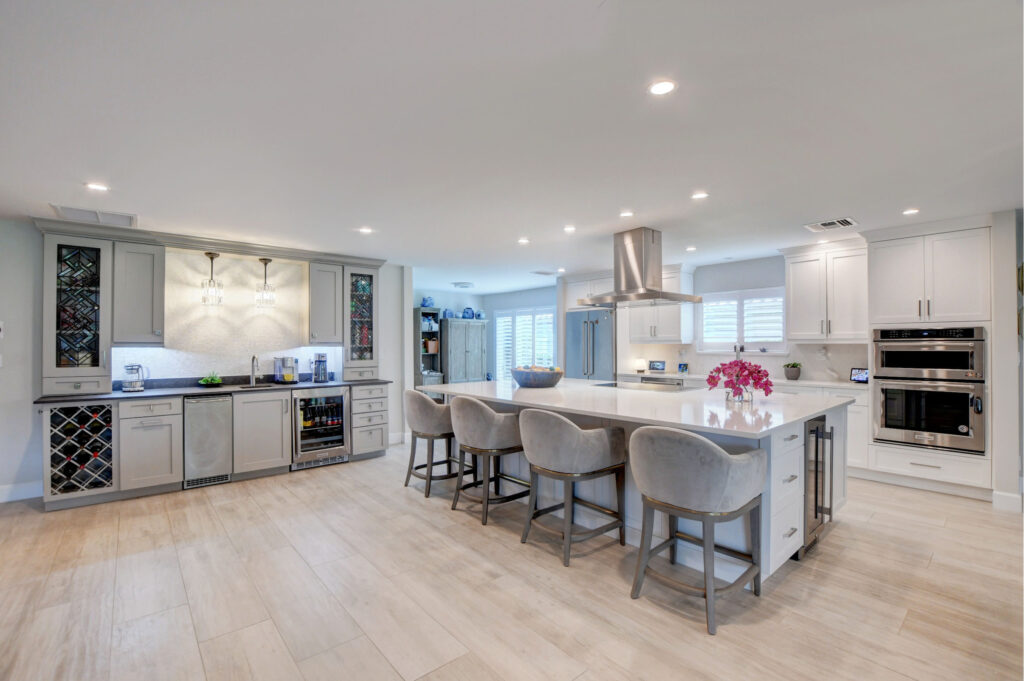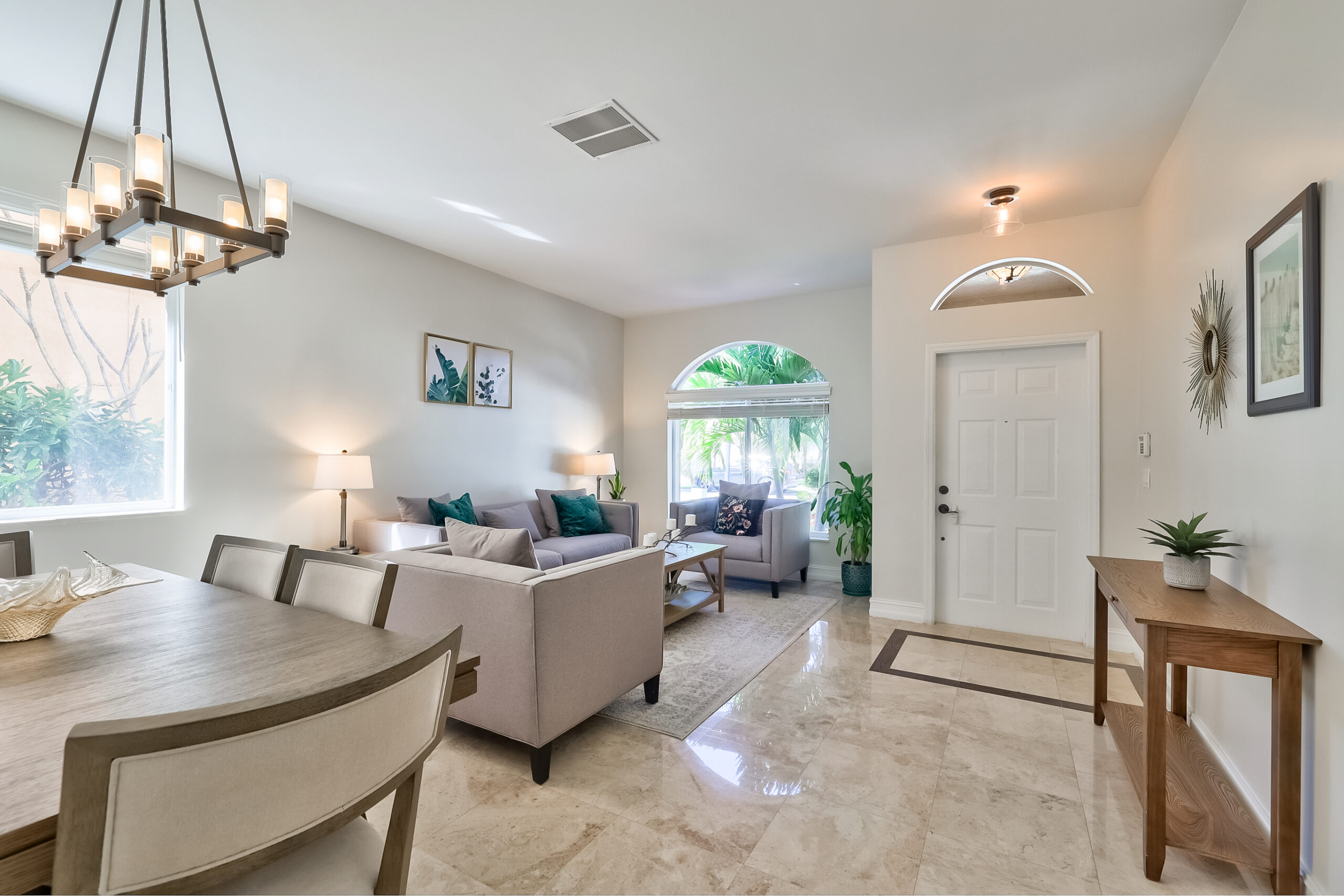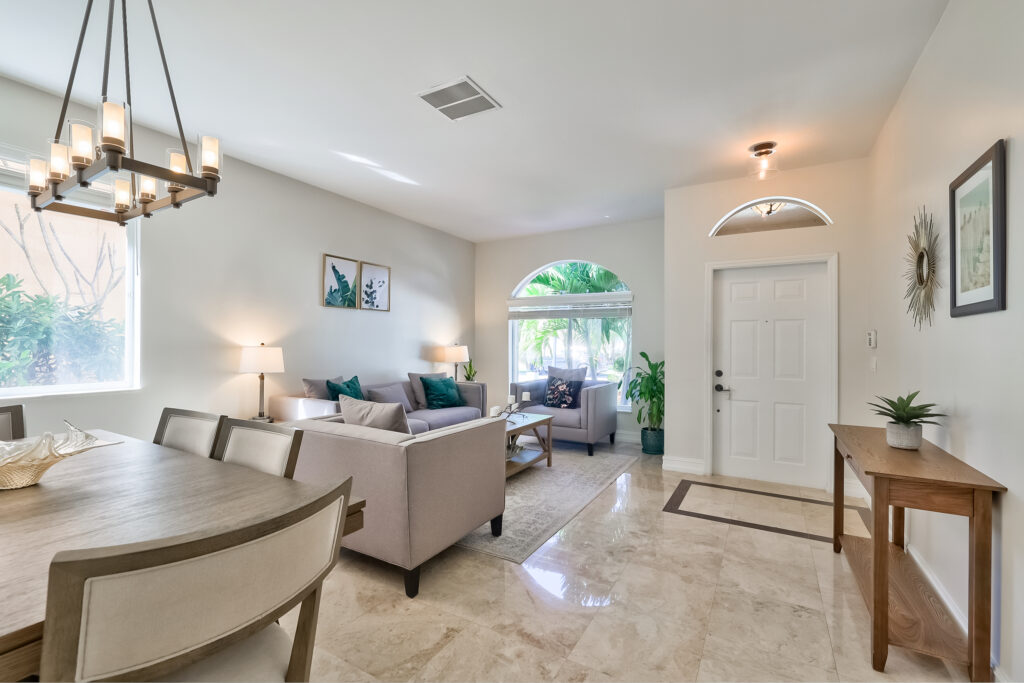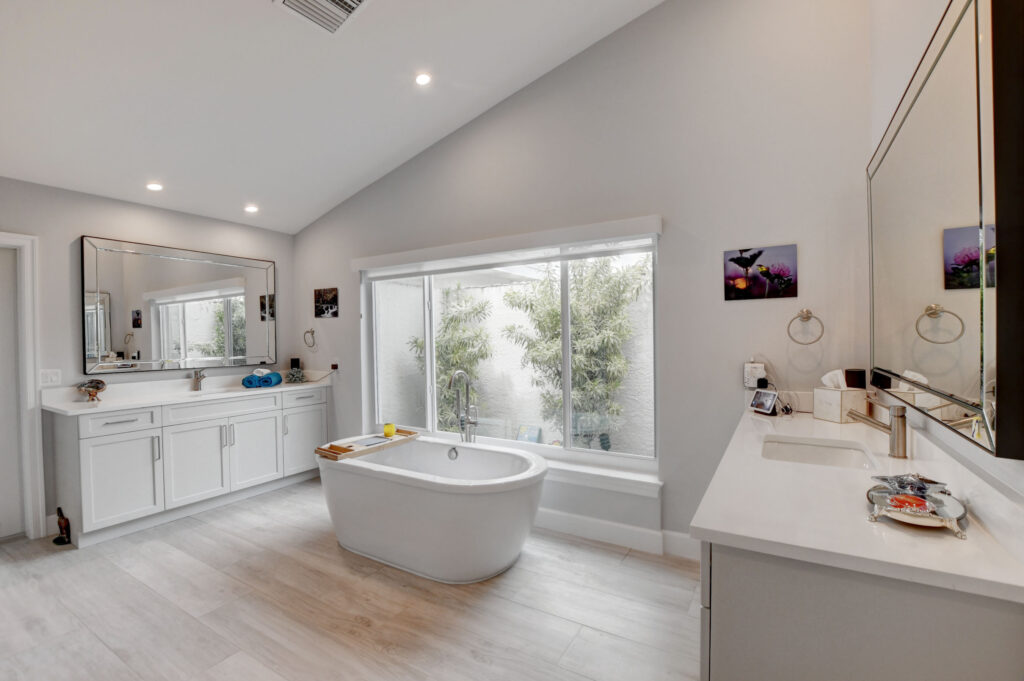11 Tips To Help Your Home Sell Fast
When real estate agents talk about staging your home, they’re referring to a method of preparing a property for sale on the real estate marketplace. Staging is designed to showcase a home’s best assets, impress buyers, and sell it quickly for the highest possible price.

Potential buyers aren’t just looking for a structure to inhabit—they’re also looking for a way to fulfill their dreams and improve their lifestyle. Staging can create a more emotional purchase for the buyer, which ultimately can generate more money for the seller.
Staged homes spend an average of 90% less time on market than their upstaged counterparts.
Because not all sellers stage their homes–especially homes in lower price ranges–you’ll be at an advantage if you elect to take the extra step of staging your property. Here’s how.
Home Staging 1 On 1
Home staging refers to preparing your home to sell so it appeals to the most potential buyers who will pay the highest possible price. Relative to the amount of time and money involved, staging may be one of the most lucrative projects you ever undertake.
The living room, kitchen, bathrooms, bedrooms, and outdoor living spaces are all important areas to focus on when staging your home.
A few recommended home staging tips:
- Declutter
- Boost Curb Appeal
- Deep Clean the Inside
- Get Rid of Odors and Smells
- Take Care of any Necessary Repairs
- Remove any Personal Items
- Home Lighting
- Neutral Colors
- Clean your Closets
- Set The Dining Room Table
What Is Staging?
Home staging is not the same as decorating. Decorating is about personal style, while staging makes your home appealing to the largest pool of buyers. Good staging lets the buyers imagine themselves in the home, shows off its good features and hides its flaws, turns weird spaces into usable spaces, creates a mood (stagers call it “emotional” staging), and makes the home look significantly better in photos.
Why Home Staging Is Important
When dealing with such a significant financial transaction as selling as home, you don’t want to settle for a lower selling price or a longer marketing period than you have to.
Relative to the amount of time and money involved, staging may be one of the most lucrative projects you ever undertake. Potential buyers aren’t just looking for a structure to inhabit—they’re also looking for a way to fulfill their dreams and improve their lifestyle. Staging can create a more emotional purchase for the buyer, which ultimately can generate more money for the seller.
How Staging Affects Sale Price and Time on Market
According to the 2020 Profile of Home Staging, a report from the National Association of Realtors (NAR), 25% of buyers’ agents and 22% of sellers’ agents said that staging a home increases the offer price by between 1% and 5%, compared to other similar homes on the market that aren’t staged.
The report also found that 83% of buyers’ agents say staging makes it easier for buyers to visualize a property as their future home, which can help the home sell faster. According to the report, more than half of sellers’ agents say staging decreases the amount of time a home spends on the market.
11 Home Staging Tips
According to the NAR report, the most common rooms that are staged are the living room (93%), kitchen (84%), owner’s bedroom (78%), and the dining room (72%).
1. Clean
A clean home shows potential buyers that you’ve taken good care of the property. Ideally, you should clean every part of the house, from the floors to the ceilings—and everything in between.
2. Declutter
There are two major problems with clutter. One is that it distracts buyers from your home’s features. The other is that it makes it seem like the home has less space.
3. Depersonalize
Buyers need to be able to envision themselves in your home, so remove all the family photos, keepsakes, and refrigerator art.
4. Focus on fresh
A few potted plants can do wonders to make your home feel fresh and inviting. If you have a lot of plants, space them out strategically so they don’t overwhelm any one area
5. Get rid of odors
Another way to make your home seem fresh is to get rid of odors. Pets, kids, last night’s dinner, a damp bathroom, and many other conditions can make your home smell.
6. Define rooms
Make sure that each room has a single, defined purpose. And make sure that every space within each room has a purpose. This will help buyers see how to maximize the home’s square footage. Even if the buyer doesn’t want to use the room for the same purpose, the important thing is for them to see that every inch of the home is usable space.
7. Wallpaper and paint
It is unlikely that a potential buyer will like your wallpaper or custom paint colors. Your best bet is to tear it down and paint the walls with a warm neutral color instead.
8. Flooring
No one wants to live in a home with dirty, stained carpet, especially when someone else was the one who dirtied it.
9. Lighting
Take advantage of your home’s natural light. Open all curtains and blinds when showing your home. Add fixtures where necessary and turn on all the lights for showings (including those in the closets).
10. Furniture
Make sure furniture is the right size for the room, and don’t clutter a room with too much of it. Furniture that’s too big will make a room look small, while too little or too small furniture can make a space feel cold. You’ll also want to arrange the furniture in a way that makes each room feel spacious, homey, and easy to navigate.
11. Exterior
The exterior and the entryway—which factor into the home’s “curb appeal”—are important points of focus because they can heavily impact a buyer’s first impression. They may even determine someone’s interest in viewing the inside of the house.
Make sure your lawn, hedges, trees, and other plants are neatly pruned, and be sure to get rid of any weeds. Wash windows well and consider adding flower boxes to brighten them up even more. If you can, power wash your home’s exterior—this can make it look almost freshly painted but with less effort and expense.
Make sure the sidewalk leading up to the house is clear and clean and buy new doormats for the front and back doors. If you have a pool, showcase it by making sure it’s crystal clear. Creating some sort of outdoor living space in the backyard, such as a deck or patio with outdoor furniture, is another way to use the exterior of your home to its greatest advantage.







